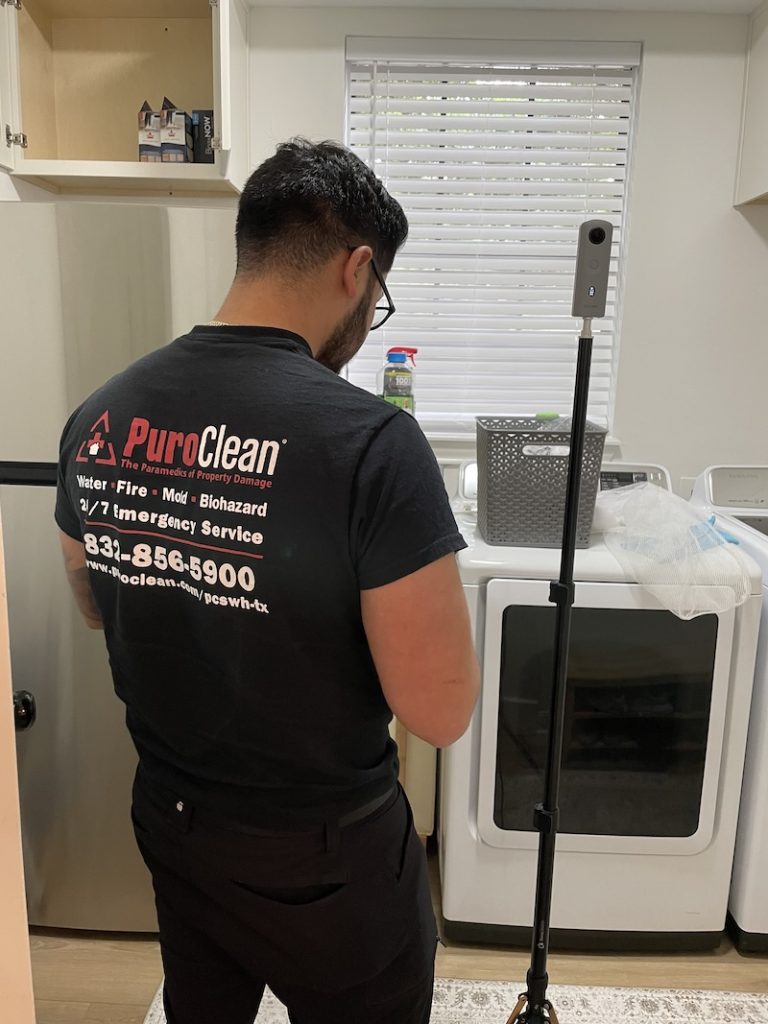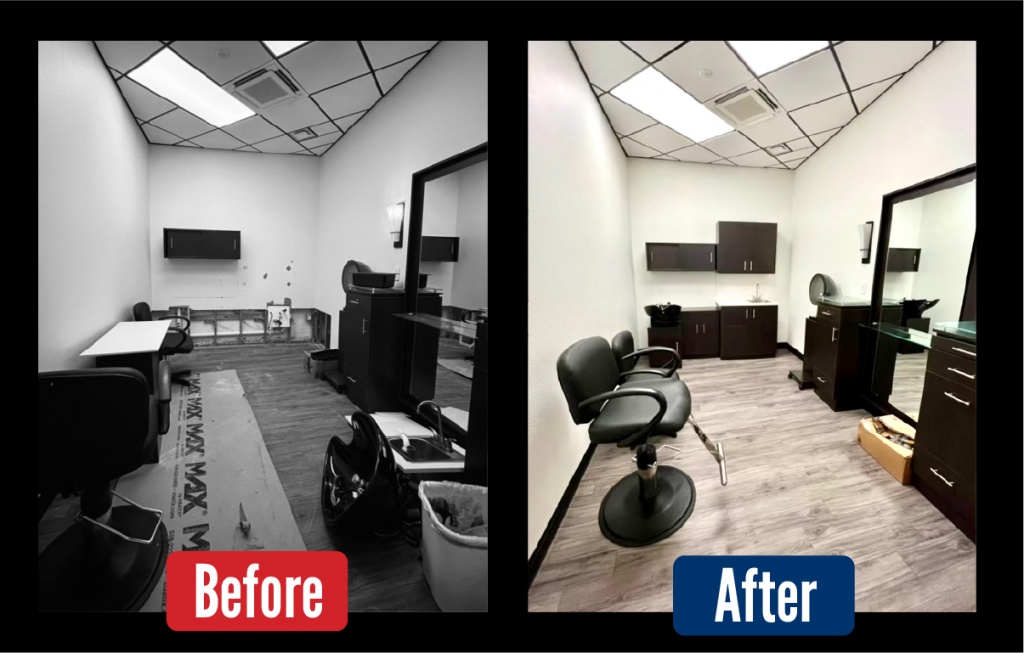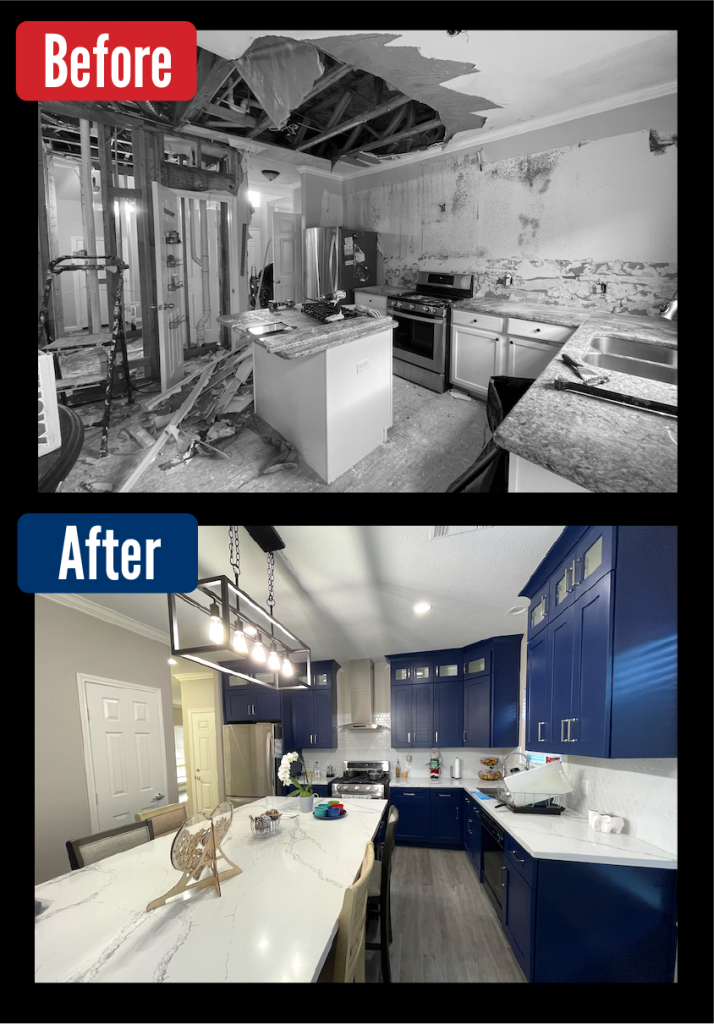Reconstruction after damage is a critical step in restoring your home or property after a disaster. Whether it’s caused by water, fire, mold, or another event, this process ensures that your property is returned to its pre-loss condition, or even better. However, it can be a lengthy and complex journey, involving numerous parties, from contractors and adjusters to your insurance company. In this comprehensive guide, we’ll walk you through every step of the reconstruction process, highlighting best practices to ensure everything goes smoothly, and providing tips for navigating insurance and understanding the paperwork.
Step 1: Assessing the Damage and Creating an Estimate
One of the first steps in the reconstruction after damage process is to accurately assess the extent of the damage. This is where technology like DocuSketch comes in handy.
What is DocuSketch?
DocuSketch is a cutting-edge 360-degree documentation tool used by restoration professionals to capture a detailed view of your property after a disaster. It creates a virtual walkthrough of your home, giving contractors, insurance adjusters, and property owners a complete visual record of the damage. This tool helps build a more precise estimate, ensuring that nothing is missed when preparing for the reconstruction.



If a DocuSketch is not initially taken, someone from the reconstruction team will visit the property to capture it. Once the final DocuSketch is created, it is used to put together a detailed estimate for the work needed to restore your property.
Step 2: Submitting the Estimate to the Insurance Company
After the estimate is prepared, the next step is submitting it to your insurance company for approval. Keep in mind that insurance companies take time to review estimates thoroughly before granting approval. The approval process can be slow and might take several weeks. Homeowners should be patient during this stage, as it’s essential that both the contractor and the insurance company agree on the scope of work and costs.

What Can Homeowners Expect During This Time?
- While waiting, it’s important to understand that this is a normal part of the process, and rushing through could lead to issues down the line.
- The insurance company will carefully review the estimate to ensure it aligns with their policies.
- In some cases, the insurance company may request revisions or additional documentation before approval.
Step 3: Revising the Estimate
Sometimes, after submitting the initial estimate, the insurance company may request revisions. This is a common occurrence and nothing to worry about. At PuroClean, we aim to make this process as quick and seamless as possible. Our team typically completes any revisions within 24 hours of receiving the request, ensuring that your project continues moving forward without unnecessary delays.
Step 4: Meeting the Project Manager and Reviewing the Scope of Work
Once the estimate is approved by the insurance company, the next step is meeting your PuroClean project manager. The project manager will walk through your property with you, carefully reviewing the scope of work that needs to be completed. This walk-through allows homeowners to discuss the extent of the damage, any concerns they may have, and potential changes they want to make to their home during reconstruction.
Change Orders vs. Supplements
During this phase, it’s crucial to understand the difference between a Supplement and a Change Order:
Supplement: A supplement refers to additional work that was not initially included in the original estimate but is necessary to complete the reconstruction. This extra work is typically covered by your insurance policy and is not an out-of-pocket expense for the homeowner.
Change Order: A change order, on the other hand, involves upgrades or modifications that the homeowner wishes to make during the reconstruction process. Since these changes are considered upgrades, they are not covered by insurance and will be paid for out-of-pocket by the homeowner. Examples include upgrading countertops, flooring, or other materials beyond what was originally there.
Step 5: Payment of Deductible and Change Orders
Before the actual reconstruction can begin, the homeowner will need to make a payment of the deductible and any additional costs associated with change orders. The deductible is the portion of the insurance claim that the homeowner is responsible for paying out of pocket. The amount of the deductible varies depending on your insurance policy, but it must be paid upfront before work begins.
What is a Deductible?
A deductible is the amount you, as the homeowner, agree to pay toward repairs before your insurance coverage kicks in. For example, if your deductible is $1,000, you will need to pay that amount before the insurance company pays the rest of the claim. Deductibles help share the cost of the repair and prevent small claims from being filed.
If you have agreed to any change orders during the planning phase, those costs must also be paid in advance.
Step 6: Communication During the Reconstruction Process
Throughout the reconstruction process, it’s essential to maintain open lines of communication with your project manager. Don’t hesitate to reach out if you have any questions, concerns, or if you notice anything that needs to be addressed. Your PuroClean project manager is there to ensure everything is progressing as planned and to address any issues that may arise along the way.
Step 7: Final Walkthrough and Excellence Service Endorsement (ESE)
Once the reconstruction is complete, the project manager will conduct a final walkthrough of the property with you. During this walkthrough, you’ll have the opportunity to inspect the work and ensure that everything meets your expectations. If there are any concerns or final touches needed, this is the time to bring them up.
At the conclusion of the walkthrough, you will be asked to sign the Excellence Service Endorsement (ESE), which confirms that you are satisfied with the work completed. This is an important step in finalizing the project, as it marks the official completion of the job.




Conclusion
The reconstruction after damage process can be a complex and time-consuming journey, but with the right team and knowledge, it becomes much more manageable. From the initial estimate to the final walkthrough, understanding each step and knowing what to expect will help ensure that your property is restored as efficiently and smoothly as possible.
Working with trusted professionals like PuroClean means you can rest assured knowing that your home is in good hands. With quick revision turnarounds, transparent communication, and a commitment to high-quality workmanship backed by a five-year warranty, we’re here to make your reconstruction journey a success.
If you have any questions or concerns along the way, don’t hesitate to contact your PuroClean project manager—we’re here to help!
FAQ from Homeowners:
Why is PuroClean receiving the Recoverable Depreciation?
In some cases, your insurance policy may include recoverable depreciation. This refers to the amount subtracted from the initial estimate due to the age or condition of the damaged property. Once the reconstruction work is completed and documented, PuroClean will submit the necessary paperwork to your insurance company to recover this depreciation. If approved, the insurance company will release the remaining funds to PuroClean, since it was substracted from the initial estimate.
Do PuroClean give me any warranty?
If your project is being completed through a Third-Party Administrator (TPA) like Accuserve or Alacrity, it typically includes a five-year warranty on the workmanship. This means that any defects in the construction or materials will be repaired for up to five years after the reconstruction, giving homeowners added peace of mind.
What happens if I am away from my house or on vacation while the reconstruction job is supposed to start? Do I need to be there everyday?
If you are away from your house or on vacation when your reconstruction job is scheduled to start, there’s no need to worry. Your dedicated PuroClean Project Manager will stay in close communication with you throughout the entire process. If you won’t be available on-site, we can set up a secure lockbox, allowing our team access to the property with a key. This ensures we can continue the reconstruction work smoothly while keeping you updated on progress every step of the way. Your peace of mind is our priority, even when you’re not at home.
How long the reconstruction will take?
The duration of the reconstruction process can vary significantly and depends on several factors. This article covers the different steps involved, but the timeline will ultimately depend on the extent of the damage, the responsiveness of your insurance company, and external factors like material availability. Each project is unique, so while we aim to complete the work as efficiently as possible, these variables can impact the overall schedule. Rest assured, we’ll keep you informed every step of the way.

 PuroClean of Central Southwest Houston
PuroClean of Central Southwest Houston